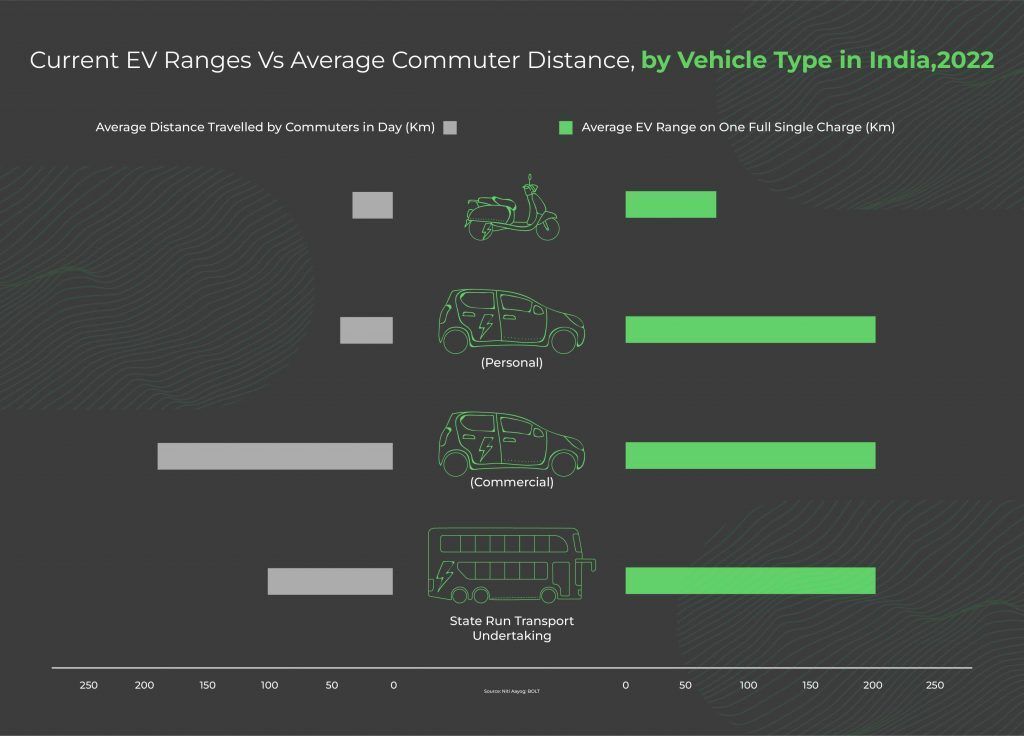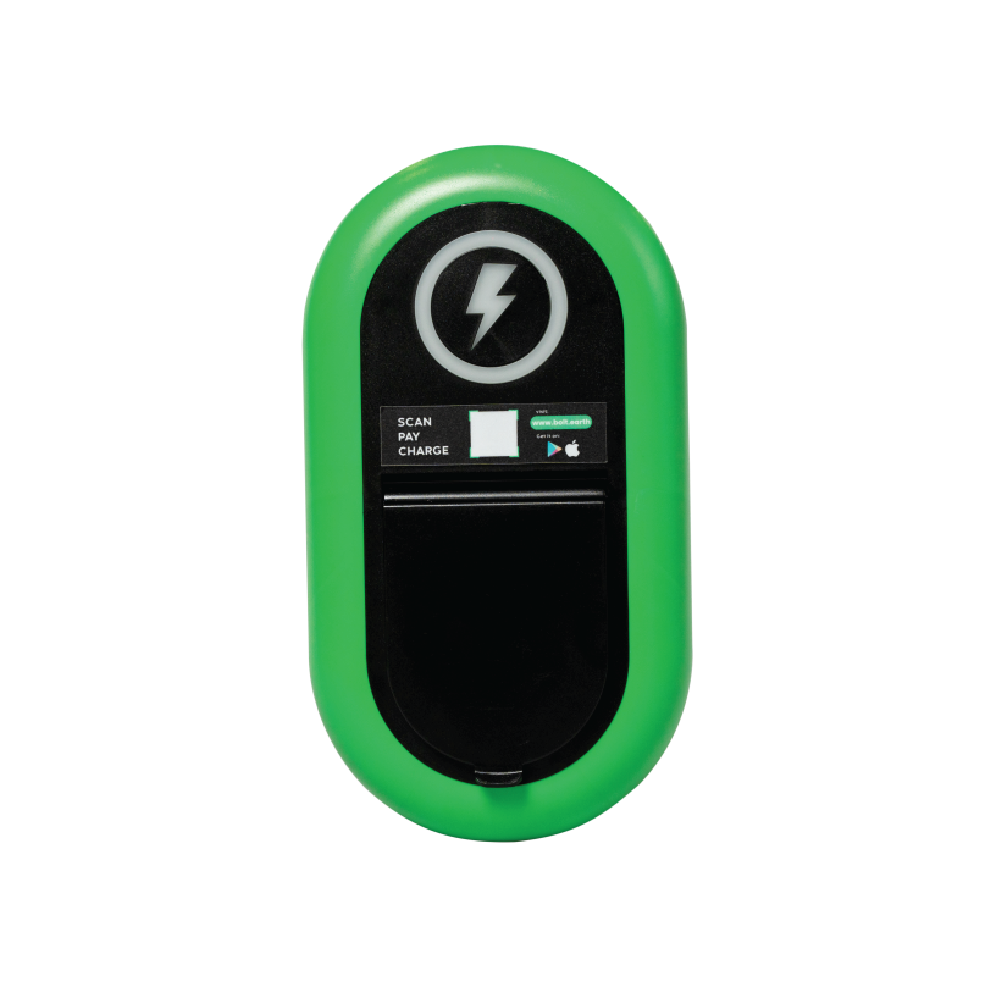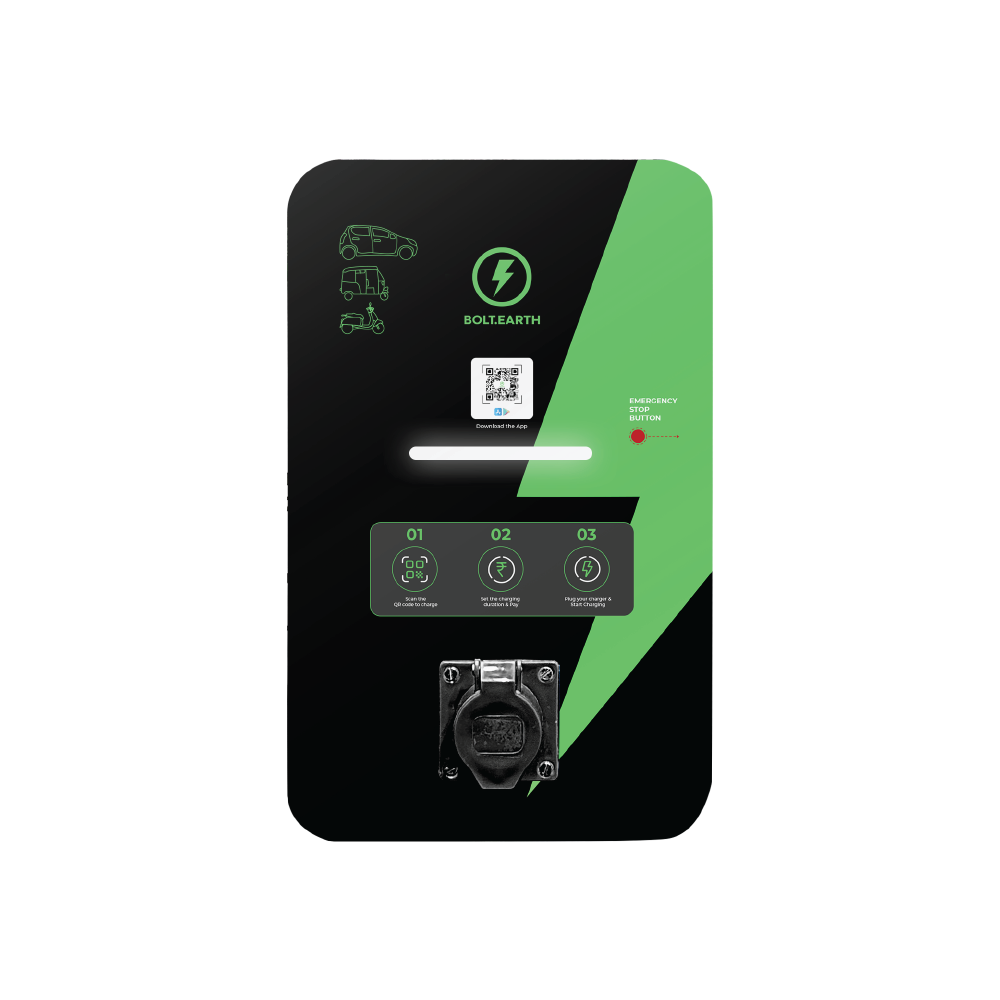The Importance of Affordable Slow Chargers in Building a Robust Country-Wide EV Network
Raghav Bharadwaj
Chief Executive Officer
Published on:
13 Apr, 2023
Updated on:
06 Oct, 2025

During the 2015 COP21 Summit held in Paris, the Indian government pledged to reduce greenhouse gas emissions by 2030, minimizing their carbon footprint by 35% compared to levels in 2005. To meet this commitment, the Indian government aims to transition 30% of vehicles on the road to electric vehicles (EVs) by 2030.
Policymakers, infrastructure developers, investors, and private companies all play a vital role in achieving this EV milestone. Thus, their key focus should be incentivizing businesses and users to improve accessibility to a country-wide EV charging network.
The image below shows the percentage of EV market share across regions in Q4 2022.

This article analyzes the key role of affordable slow chargers in creating this comprehensive EV charging network, and answers these three questions:
- Why does India need a country-wide EV charging network?
- What are the challenges of building a charging network across India?
- How can a slow charging EV network resolve these challenges?
Need for a Comprehensive Country-Wide EV Charging Network
Road transportation in India constitutes most of the country’s fossil fuel demand and is a major source of carbon emissions. The shift from ICE (internal combustion engines) to EVs can help India make significant strides toward achieving carbon neutrality.
The aim is to reduce dependence on fossil fuels and replace it with electric energy, which is much more efficient to produce and consume. The transition to EVs will be beneficial for the environment and will also reduce India’s oil import dependency. However, this transition will only be possible through the creation of a comprehensive charging infrastructure.
Policy Focus on EV Charging Infrastructure
Most people considering an EV are concerned about the availability of charging stations. The availability of adequate charging infrastructure is, therefore, a critical requirement for widespread EV adoption in India.
To achieve India’s vision for 2030, the Bureau of Energy Efficiency (BEE) has been nominated as the Central Nodal Agency for EV Public Charging Infrastructure by the Ministry of Power, Government of India. As a result, every state government has appointed their State Nodal Agency to roll out EV Public Charging Infrastructure as government policy works to make a charging station accessible every 25 km along highways and roads. But this initiative alone may not be sufficient to meet India’s charging needs.

Complex Challenge of Building a Nation-Wide EV Charging Network
Despite the push from the government, public EV charging stations are not available across the country yet. It takes significant capital to set up and maintain charging infrastructure, and the country’s infrastructure may not be able to handle the load.
These challenges standing in the way of rolling out a nationwide network are discussed in more detail below.
1. Public EV Charging Stations Are Costly
Public charging station setups have fast charging capabilities, meaning they use DC power, and are costly to set up, run and maintain. The charger cost, however, is not the only issue to consider. Charge point operators also need to consider the cost of land, power transformers, power substations, and metering equipment.
Since fast chargers are designed for public use, customers drive in, charge their EVs, pay, and drive out. This means the land requirement is substantial as operators try to manage peak capacity by charging multiple EVs simultaneously. The power and infrastructure required to
manage multiple charging and metering units further add to the setup cost.
2. Setting up Public EV Charging Stations in Rural Areas Is Fraught with Challenges
Creating a country-wide EV charging network includes rolling out stations in rural areas. This presents a challenge, as the population density in these areas is low. Rural areas generally have lower demand for EV charging, meaning setting up charging stations is not financially viable. Given that the per capita income for rural areas is low, residents in these areas may not be able to afford using charging stations for their EVs.
Additionally, power supply is a challenge in many rural areas. Many regions do not have round-the-clock access to power from the grid. Augmenting the power supply in these regions may not be possible due to the additional costs and long gestation periods for these projects. This, in turn, makes setting up fast charging stations in these areas a challenging task.
3. The Power Grid May Not Support the Load of Charging Stations
As the EV transition picks up pace, the charging stations’ demand for electric power will also increase. Meeting this demand will require efficient power grid management and reliable power supply to support India’s increasing demand for EV charging infrastructure in the years ahead. Because fast chargers can require up to 750V, they add a lot of pressure to the existing power grid.
Additionally, the increased load on the grid can result in issues like network congestion, voltage issues, an increase in peak load, and phase imbalance issues. To manage these challenges, DISCOMs (power distribution companies) will need to regulate the power supply to fast chargers through measures such as location planning and smart charging capabilities.
But until then, fast chargers cannot be the mainstay of the charging network in India. A more viable solution would be to rely on affordable slow chargers as the centerpiece of the EV charging network.

Building a Nation-Wide EV Charging Network with Affordable Slow Chargers
Given that fast chargers cannot be rolled out country-wide due to their high cost and the pressure they add to the grid, the attention shifts toward more affordable slow chargers. The three areas below highlight how slow chargers may help address the challenges in creating a country-wide EV charging network.
1. Slow Chargers Are Affordable
Government policy can encourage charging companies to primarily focus on rolling out a country-wide network of affordable slow chargers because it is the most cost-effective, convenient, and efficient way to recharge an EV. Setting up slow chargers requires little investment compared to fast chargers.
With current government policies, slow chargers can play a dominant role (≥ 60%) in delivering the demand for EV charging infrastructure in India. The Indian scenario is not much different from the worldwide trend, as slow chargers are slated to be the dominant choice due to the advantages of slow charging technology.
For instance, slow chargers offer the added benefit of maximizing battery life and safety compared to fast charging. Slow charging is the best way to charge an EV because it uses low voltage and allows ample time for ion stabilization. In contrast, fast charging generates more heat, which is detrimental to the battery’s health. This makes slow chargers more economical in the long run.
2. Rural Regions Can Support Slow Chargers
Slow chargers are viable in rural areas because they have low setup costs and infrastructure requirements. They only need an AC power supply and can easily be powered through renewable energy sources such as solar power in the absence of a round-the-clock reliable power supply.
Most rural regions in India have an abundant supply of renewable energy sources, such as solar energy. They could therefore leverage this supply to power slow charging stations at a fraction of the cost required for a fast charging station.
Renewable energy-powered slow charging stations with facilities like net metering could help mitigate the power supply challenge and improve the financial viability compared to a fast charging station. With net metering, charging point operators can supply surplus power that they generate back to the grid and reduce their power costs significantly.
3. Slow Chargers Are Better for the Power Grid
Slow chargers use AC electric supply to charge the EV in a few hours while it is parked. For reference, a 2-wheeler with a 2KWh battery can charge in an hour, while larger vehicles will charge in five to six hours. Slow charging stations can also be optimized for energy management through smart load management for grid balancing.
By providing information access to users and providers across the network, smart chargers can help users save money. They can also drive the adoption of slow charging among price-conscious consumers, who would form the majority of users in India.
DISCOMs will be able to manage the increased load of a slow charger-dominated EV charging network rollout much more efficiently than a faster charger-dominated network. This is because slow chargers deliver up to about 2.5 KW-3.3 KW of power with a 230V/15A single-phase plug.
The power requirement of a fast charger is manifold: 10 KW-50 KW or higher capacity and voltage rating 48V/72V, up to 750V or even higher depending on the battery capacity. A smart network of slow chargers will also improve grid stability as DISCOMs will be able to manage the peak load of charging demand more efficiently.
That being said, will rolling out a network of affordable slow chargers be beneficial for the country’s overall goals? Can slow charging meet India’s increasing EV charging needs?
Slow Chargers Can Cater to the Majority of EV Charging Demand in India
Government policy encourages people to set up chargers across the country, even going as far as delicensing the activity. Anyone can set up EV charging points according to the technical performance standards provided in the government policy.
The setting up of slow charging stations has also been incentivized through early bird incentives and tax exemptions, such as a reduction in GST on chargers and a lower tariff on the power supply. However, will this promotion of affordable slow chargers be successful in India? How can slow chargers meet the EV charging demand?
The numbers below can give an idea of how much charging EVs require for their daily function:
- 2-wheelers in India run for 17 km per day on average
- Private 4-wheelers in India have an average daily run of 32 km
- Commercial 4-wheelers run for 192 km per day on average
- Intra-city public transport (buses or light commercial vehicles) run for approximately 100 km a day on average
The graph below shows that the average run for each of these EV types is well below the average range gained from a single full charge. This means charging these vehicles overnight using slow chargers is a viable option.

For 2-wheelers, private 4-wheelers, and most commercial 4-wheelers, a large-scale public fast-charging infrastructure is unnecessary. Installing slow charging points within residential complexes, housing societies, shopping malls, parking lots, and offices could cater to the majority of the charging demand for EVs. It is pertinent to note that most EVs in India are 2- and 3-wheelers. Therefore, affordable slow chargers can cater to the majority of the country’s charging demand quite comfortably.
Government policy has already mandated the provision of sufficient EV charging points in housing colonies/building apartments.pdf), which is a step in the right direction for building charging infrastructure within the residential infrastructure. Parking lots could also adopt slow chargers and create a feasible revenue model for EV charging services.
The image below provides an overview of the sales share of electric vehicles by mode and scenario in India 2030.

Role of Software in Creating a Network of Affordable Slow Chargers
Policymakers, infrastructure providers, investors, and charging companies need to put concerted efforts into promoting slow charging in India and connecting all the charging points into a single network through software. This is crucial to accelerate the rollout of a country-wide charging network and to achieve the EV30@30 target. This will pave the way for a host of economic and environmental benefits for stakeholders in the EV ecosystem, Indians, and people across the globe.
To promote the development of charging infrastructure, the Indian government has made it mandatory for public charging stations to tie up with at least one Network Service Provider (NSP) to enable advanced remote/online booking and specify service charges. Such interconnectivity will encourage large-scale private participation in the setting up of charging stations. For instance, private slow chargers can generate passive income, e.g., through a simple app-based scan-pay-charge. This will also help strengthen the community of EV owners in the region as more consumers can access charging services conveniently.
Software will play a critical role in connecting slow chargers across the country, especially with advancements like Open EV Charging Platforms allowing different entities to add their charging points to a single network. This software can benefit users, providers, investors, and policymakers by providing information such as the nearest available charging point and the supply-demand gap in charging in a given region.
Accelerating the Transition to a Sustainable Future
As India marches toward full EV adoption by 2030, the country needs to support its initiatives with a robust charging network. Fast chargers, however, are only a small part of the solution here. They are expensive to set up and substantially increase the load on the power grid. Fast chargers are also unsuitable for rural areas without enough grid support and capital to implement them.
On the other hand, the potential environmental and economic impact of affordable slow chargers and a country-wide EV network on the future of transportation and energy are immense. The mainstay of the EV charging network will be slow chargers, supplemented with other technologies, such as fast chargers and battery swapping systems.
With India’s strides towards its COP21 goals, many niche innovations in EV charging are starting to arise, such as wireless charging and vehicle-to-grid (V2G) technology. V2G, for instance, has the potential to make about 5% of the total EV battery capacity available to manage the grid’s peak demand.
These innovations will surely drive EV adoption in time, especially if they become more affordable and available. But until then, investing in affordable slow chargers can solve India’s growing need for a country-wide EV charging network.
To learn more about affordable chargers and their impact on the EV space in India, please see the FAQ and Resources sections below.
FAQ
What is a slow charger, and why is it important for EV charging networks?
Slow chargers use an AC power supply to charge the EV. Most private-use EVs will provide a slow charger to install at home, but EV owners can also get a compatible slow charger from the market through independent providers. A slow charger is the most popular and affordable way to charge an EV. Although slow chargers take longer to charge the battery, they are safe and prolong the EV battery’s life.
What is the difference between a slow and fast charger for EVs?
A slow charger uses an AC power supply to charge the EV battery, whereas a fast charger uses DC power as input. Slow chargers charge slowly but are low-cost and good for the battery’s long-term health. In contrast, fast chargers are helpful when you need to charge the EV quickly and are willing to pay a premium for the quick service.
How do slow chargers fit into the infrastructure requirements for a country-wide EV network?
Slow chargers are an important part of the country-wide EV network infrastructure as they provide a reliable, convenient, and economical mode of charging EVs. Users can plug in the EV for charging overnight while they rest or during the day at their convenience. Slow chargers require very low setup costs compared to fast chargers and are expected to fulfill most of the EV charge requirements for private-use EVs.
What challenges does India face in building a country-wide EV network, and how can affordable slow chargers help address those challenges?
India faces multiple challenges in building a country-wide EV network, such as vast geography, erratic power supply, and price-sensitive consumers, particularly those in rural areas. These factors inhibit the rollout of a public charging station network based on fast charger technology as it is capital-intensive. Slow chargers are touted as the perfect solution for the Indian market because they are economical and can be easily set up at home.
What role do government policies and incentives play in encouraging the adoption of affordable slow chargers and building a country-wide EV network?
Government policies and incentives enable the adoption of slow chargers and the building of a country-wide EV network. The government offers different types of financial incentives through national-level policies, such as FAME II, and state-level policies. The financial incentives make it economically a smarter option to choose EVs and install a slow charger at home.
Resources
Bureau of Energy Efficiency (BEE): Technical Study of EVs and EV Charging Infrastructure
Learn more insights from the BEE around India’s charging infrastructure and the role it plays in boosting EV adoption.
Bureau of Energy Efficiency (BEE): Using E-Mobility to Make the Transportation Sector Energy-Efficient
Discover how the transition to EVs has the potential to make India’s transport more energy-efficient.
Ministry of Power: Electric Vehicle Incentives
Find out about the incentives offered by the Government of India to boost EV adoption.
National Portal of India: National Mission on E-Mobility
Read about the Indian Government’s objectives and mission to transform the transportation sector.
The Energy and Resources Institute (TERI): The Issues Facing DISCOMs and Stakeholders in the Adoption of EVs
Understand DISCOMs’ perspective on the shift to EVs and what issues are anticipated for them.





